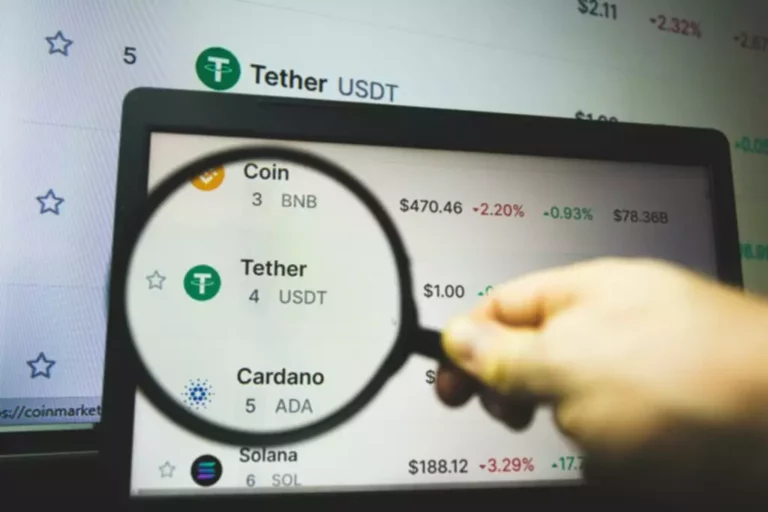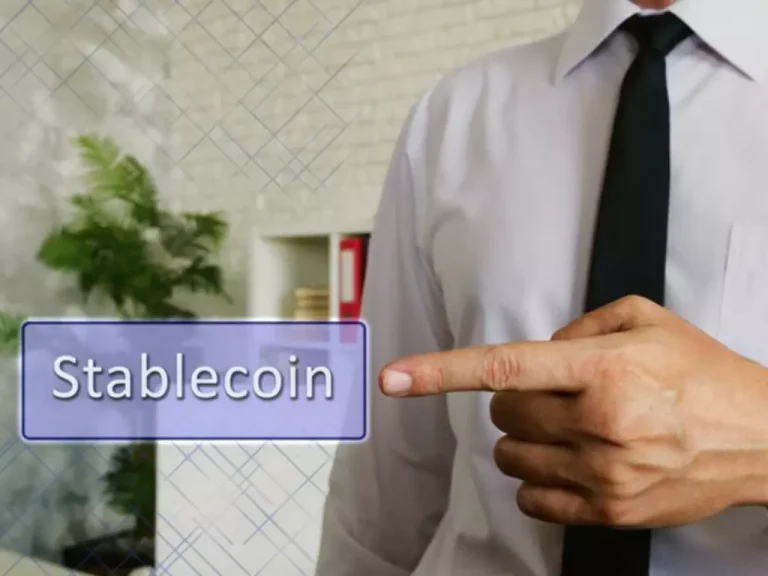Cryptocurrency is known for being volatile. We keep reading the news that Bitcoin has reached an all-time high, then it drops almost twice its price. This volatility and unpredictability of the cryptocurrency market make investors cautious and unwilling to invest.
Now imagine a safe cryptocurrency that doesn’t cost a fortune to buy and is backed by something other than people’s trust. You get a stablecoin! Stablecoins is still rather new to the market, even though it’s been here for a while. Keep reading the article and find out what is a stablecoin and how it works.
Understanding A Stablecoin
So, what is a stablecoin? Stablecoins are crypto assets that stay stable and firm. They are less volatile by nature than cryptocurrencies and thus considered a safer investment. Stablecoins are often backed with real assets like fiat currency (typically, USD, EUR), gold, and other precious metals.
In some cases, even real estate may back a stablecoin! For example, a person may buy an entire stablecoin reserve by pegging their estates, such as a restaurant, villa, or any other building. Linking crypto assets to real-life assets offers a way of controlling significant price fluctuations within the market. Moreover, stablecoins are considered long-term investments, so investors may expect fixed asset returns.
Stablecoins are more attractive to the general public who want to invest in digital currencies. Bitcoin, Ethereum, Dogecoin, and other cryptocurrencies may offer great profits but are subject to extreme price fluctuations.
Like traditional cryptocurrency, you may exchange, hold, trade, borrow, lend, and use stablecoins to buy products and services. However, people prefer stablecoins more than traditional crypto when they want to send money abroad.
Some of the most popular and safe stablecoins are Tether, Paxos Standard, True (USD), and USD coin. Most investors prefer stablecoins as a safer option to invest in cryptocurrency.
So, if you’re considering investing in cryptocurrency, choose stablecoin as it’s safer. Moreover, your investment portfolio will be more diverse with the addition of stablecoins.


Turnkey Brokerage Solution For Your Business
Get the most profitable fully licensed fx/crypto brokerage software or ready-to-operate business in 48 hours. Best-in-class web & mobile trading platforms, sales-driven CRM, full integration with MT4/5, and 150+ payment providers.
Stability and stablecoins
Now you know what is a stablecoin, so you should learn how it stays stable. The “traditional” fiat currency requires having a specific amount of collateral to back it up. This collateral can be anything from gold, government securities, or a foreign country asset.
This collateral keeps the money in circulation below the money in demand. The government must print a fixed amount of national currency to avoid inflation. This fixed amount is always backed by chosen collateral.
The developer of the stablecoin uses a similar process to peg the coin. The developer company must set aside a fixed amount of fiat currency (U.S dollar, European euro, etc.), gold, or another cryptocurrency. Only then can the developer start minting stablecoins. As a result, the demand for stablecoins never exceeds the supply.
The collateral provides a safe foundation for the stablecoin. This collateral makes sure the stablecoin is subject to fewer price fluctuations. As a result, a stablecoin is less volatile than traditional cryptocurrencies.

Different types of stablecoins
When people are asked what is a stablecoin, they typically answer that it’s a cryptocurrency backed by a fiat currency. However, it’s a bit misleading a description as described in the previous section of the article.
The original idea of a stablecoin is that it must be stabilized by using fiat currencies. Most people believe the U.S. dollar is the best choice, given its wide acceptance and stability.
However, some people believe in the future of digital assets that governments or central banks do not control. These views influence the creation of different types of cryptocurrencies. Today, we differentiate three types of stablecoins based on assets used to stabilize their value:
- crypto-collateralized stablecoins;
- fiat-collateralized stablecoins;
- algorithmic stablecoins.
Now let’s check the definition and description of each stablecoin type in detail.
Crypto-collateralized stablecoins
As the name implies, crypto-collateralized are stablecoins backed by traditional cryptocurrencies. Traditional cryptocurrencies are volatile, so how can they stabilize a coin? The development company must over collateralize the stablecoin to stabilize it. The value of collateral a developer sets aside exceeds the value of the minted stablecoin.
Suppose a company issues stablecoins worth $2 million. The developer may set aside around $4 million in cryptocurrency as a collateral reserve. This collateral protects a stablecoin against a 50% price decline.
One of the most famous crypto-collateralized stablecoins is Dai. It was initially backed by ETH and locked up in small contracts. As of July 2022, it is ranked 12 on market capitalization. Its market cap as of July 15, 2022, is $6,517,262,022, according to CoinGecko.
Fiat-collateralized stablecoins
Fiat-collateralized stablecoins use fiat currencies as collateral to maintain stability. Typically, developers choose the USD or euro as collateral. However, companies may choose other collateral forms, such as gold, silver, crude oil, etc.
However, stablecoins backed by fiat currencies must undergo regular proof of reserve audits. These audits ensure transparency for stablecoin issuers, crypto exchanges, and financial institutions.
One of the most popular fiat-collateralized stablecoins is Tether. As of July 2022, it is the third-largest cryptocurrency by market capitalization and the first largest stablecoin by market cap. Its market cap as of July 15, 2022, is $65,812,173,139, according to CoinGecko.
Algorithmic stablecoins
Development companies control their algorithmic stablecoins by using an algorithm. It’s software or a computer program running a preset formula. Algorithmic stablecoins often don’t require collateral. However, most developers prefer to peg the stablecoin to a reserve asset to balance the asset’s circulating supply.
Simply put, an algorithmic stablecoin is balanced by an algorithm. It issues more coins when the market price increases and buys them back when the price decreases.
The algorithmic idea of stabilizing the coin is similar to that of central banks and governments. However, it has many differences. A central bank creates and enforces a monetary policy publicly. It uses transparent parameters understood by investors. That’s what makes algorithmic stablecoins different.
An algorithmic stablecoin issuer can’t set monetary policies for buyers. Such a peculiarity may lead to stablecoin’s value decreasing overnight, as it happened with TerraUSD.
The TerraUSD token unexpectedly de-pegged from the dollar, which was used as collateral. It has led to 95% of the investors’ wealth going down the drain overnight in May 2022. That’s one of the reasons why most investors in stablecoins rarely choose an algorithmic stablecoin as an investment.
Benefits of stablecoins
The obvious benefit of a stablecoin is its stability. It’s still a cryptocurrency, you can use it as a crypto token, but it’s less volatile. There are also other benefits of using stablecoins:
- lower fees;
- faster speed;
- borderlessness;
- the relative safety of investments.
Now let’s dive into details. Credit card processing fees often charge around 2% per transaction. That’s why companies and ordinary people use stablecoins known for lower transaction fees.
Speaking about operating speed, it takes three to five business days for a traditional financial institution to process a transaction. Stablecoin transactions may take minutes to process. Users sometimes experience delays, but it doesn’t take days to process the transaction.
What about borderlessness? Not every country provides its citizens with fair conditions. Some people want to immigrate but can’t take their savings with them as the money would be seized at the border. But people can invest in stablecoins instead of dollars or euros. Thus, they can protect their savings against inflation, move to a different country, or both.
Stablecoins have typical advantages of cryptocurrency, such as safe storage in crypto wallets, borderlessness, anonymity, etc. However, cryptocurrencies are volatile and unpredictable. Stablecoins don’t guarantee 100% safety of your investment, but no investment does. People can use stablecoins as protection against inflation, especially if a coin is fiat-collateralized with a reliable currency as a reserve asset.






